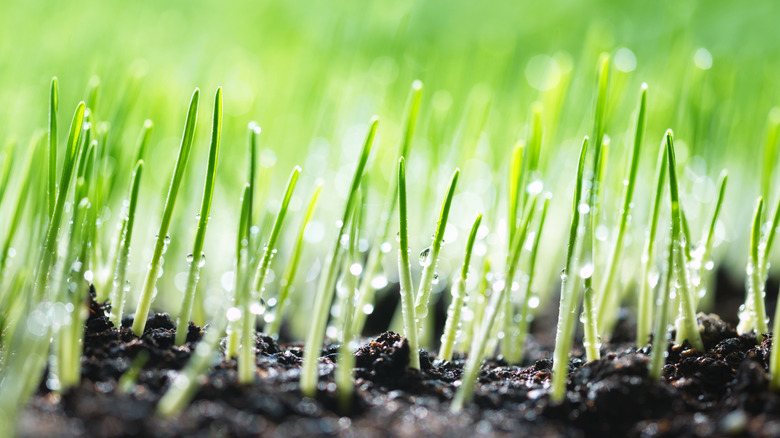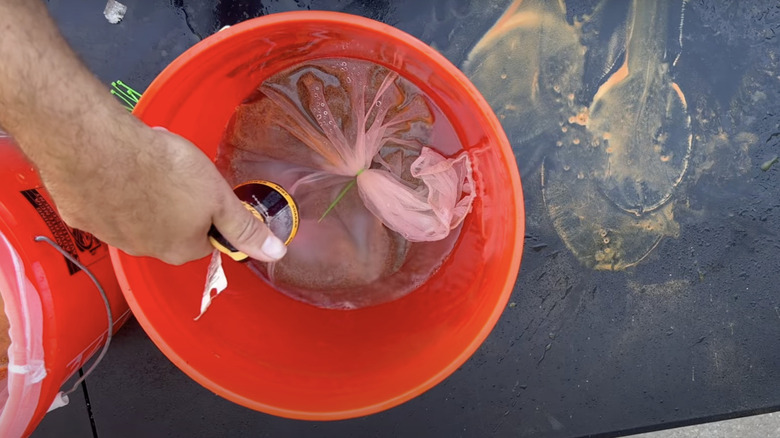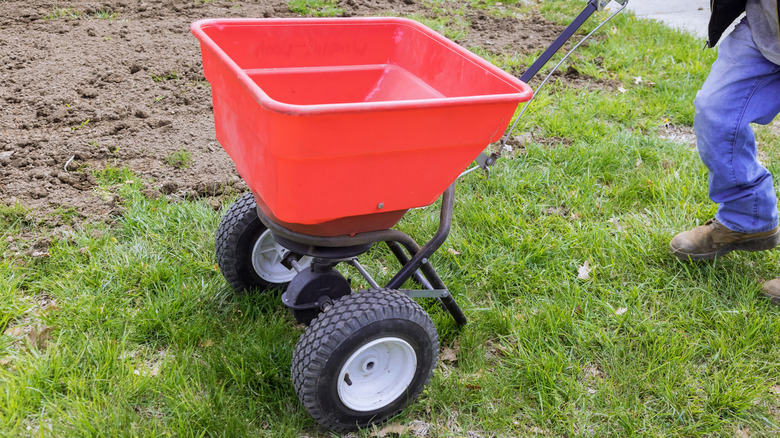Drawbacks You Should Know Before Pre-Germinating Grass Seed
Whether you're starting a brand new lawn or freshening yours up, patience is the name of the game. Grass seeds take about one to three weeks to germinate, and in the meantime, you're left blindly hoping that some green will eventually appear. For those who can't wait, pre-germination can speed things along. But pre-germinated grass seed has drawbacks you should know, including a shorter shelf life and less uniform growth.
With other lawn seeding techniques, the seeds are sown into the ground and then carefully watered on a regular basis. The first stage of germination begins when the seed absorbs enough water, taking it out of dormancy and triggering baby roots to grow through the seed's surface. The exact timing of germination can vary based on the grass species and environmental conditions. Pre-germination, on the other hand, involves taking that first stage into your own hands by soaking the seeds in water until roots begin to grow, then sowing the germinated seeds into the soil.
"By skipping the natural dormancy period, seeds sprout more quickly, reducing the time needed for establishment," explained Ryan Walts, Franchise Training Coordinator and Business Coach at Lawn Squad, in an exclusive interview with House Digest. Pre-germinated seeds "have a head start, leading to quicker root development and better competition against weeds," he added. But because of the other downsides of pre-germination, traditional seeding is a more practical option for many people.
Why pre-germination may be more trouble than it's worth
The first drawback of pre-germination is a drastically shorter shelf life. Dry grass seed takes years to expire when properly stored in a cool, dry place. But once germinated, the shelf life is reduced to days. "Unlike dry seeds, pre-germinated ones must be planted immediately, making them less convenient for large-scale or phased lawn projects," Walts told House Digest exclusively.
Pre-germinated seed is also trickier to spread evenly than dry seed, and the process requires more effort. While soaking the seeds, the water must be changed every 12 hours, Walts said. These damp seeds can clog spreaders, so you may have to take the time to hand-spread instead, and clumps of seeds can result in uneven coverage. According to Walts, mixing the seed with the fertilizer Milorganite is often recommended to help with this and can make it easier to use a spreader successfully, but that can "add complexity and cost" to the process.
The difficulties don't end after spreading. Pre-germinated seeds still require consistent moisture once they're in the ground to avoid drying out and dying. If you used a mixture of different seed types, you may have to go back and overseed certain areas to account for the different rates of germination.
Who should and shouldn't pre-germinate grass seed?
All in all, pre-germination is most helpful for a handful of scenarios where traditional seeding won't cut it. These include cooler temperatures, small lawn patches, or "areas where quick establishment is needed," Walts told House Digest exclusively. He added: "If someone is willing to put in the extra effort, it can be beneficial — but for larger lawns, traditional seeding methods are typically more practical."
There are other ways to grow grass seed fast without pre-germination. For example, you can choose a faster-growing type of grass like perennial ryegrass, which germinates in five to 10 days. Make sure that your seed of choice is appropriate for your climate and wait to spread until the temperatures are right. Water frequently but carefully to avoid waterlogging the soil. Proper preparation is also key since seedlings need more than just water to thrive. You can ensure that your seedlings pop up on time by properly preparing the soil with fertilization and aeration, helping the seeds access the nutrients, water, and oxygen they need to grow.


